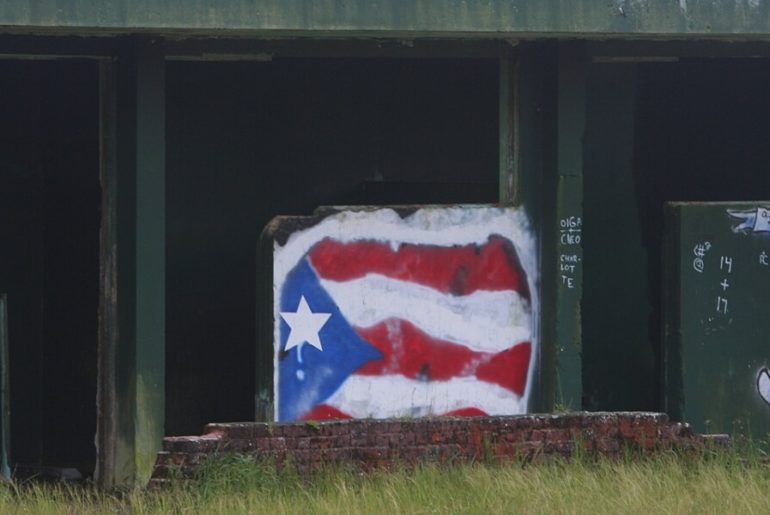Amongst the sunshine and sandy landscapes, lies destruction. Torn houses, destroyed schools, people sleeping on the streets, and a great sense of urgency is the aftertaste that Puerto Rico was left with one week after a magnitude 6.4 earthquake hit the island, killing at least one person and injuring nine others.
The natural disaster, which was strong enough to knock out power across the U.S. territory, hit the island at a time when it was still recovering from two hurricanes, Irma in 2017 and Maria in 2019. The earthquake was followed by a number of smaller tremors throughout the weekend, leaving hundreds of homes and businesses in the southwest region of the country damaged or destroyed, more than 2,000 people displaced, and thousands without water and power. With so much damage throughout, many are asking how they can help the island.
“I would say if people want to donate, be it money or supplies, don’t do it with a government entity,” said Claudia Gurrero, a journalist and Puerto Rican native who still resides on the island. “If you wanna donate, do it through non-profit organizations, community organizations and such.”
Puerto Rico’s government lack of credibility has been well documented. Last year, former Governor Ricardo Roselló was driven out of office after his Secretaries of Health and Education were arrested on fraud charges and after messages from a chat group which included profane and vulgar statements were leaked.
“I myself went yesterday to take supplies to Guánica, one of the most affected towns, and truly all government officials were doing is go around with their media kits and cameras taking pictures of themselves without really being much help,” Guerrero said.
Katerina Fleming, a Puerto Rican native living in Tampa, Florida, echoed Guerrero’s sentiment. After Hurricane Maria, Fleming, who was attending college at the time, got together with a group of friends to raise money to alleviate the disaster; they ended up collecting almost half a million dollars to help the victims in Puerto Rico. Regrettably, that money was given to the then-first lady of Puerto Rico and, according to Fleming, she doesn’t have the certainty that they used that money for a good cause. So this time, she went a different route.
“You always get that ‘survivor’s guilt’, feeling like you are not doing enough,” Fleming said. “So when the earthquakes hit, I asked my boss if she would let me put a box in the office for people to fill out with donations and she agreed. One of my coworkers then mentioned that her husband works for DHL and is Puerto Rican, so when he heard what we were trying to do in the office, he offered to pay for the shipping himself.”
Fleming, whose dad was born and raised in the south side of Puerto Rico, argues that one of the main problems is local authorities not giving enough money to the southern part of the island, adding that since Hurricane Maria, there are still resources that were never distributed.
But the local government is not the only one that has failed Puerto Rico. On Thursday, House Speaker Nancy Pelosi joined activists and lobbyists who called on the Trump administration to release $18 billion in disaster aid to the island. Last year, the president refused to make more funds available to Puerto Rico, citing the island’s history of financial difficulties and calling the place “a mess.” Since Congress approved a $19.9 billion grant after the hurricanes last year, Puerto Rico has had access to just $1.5 billion of that money in disaster aid. Last September the Trump administration missed a deadline to release another $8 billion.
“[Another way of helping would be] to create pressure in order for Trump to declare a bigger state of emergency so greater federal funds can be provided in order to rebuild homes,” Guerrero said. “Many of these homes have been destroyed, and it is really more cost efficient to build temporary housing than to reconstruct these houses which will take a lot of money that we don’t have.”
For her part, Fleming believes that a deeper cultural change should stem from these tragedies.
“The Puerto Rican people need to recognize that they have to pick their leaders better,” Fleming said. “I think that if we keep recognizing that a nation’s voice has power, whether it be in Puerto Rico or anywhere else in the world, we can get pretty far.”
Nevertheless, Guerrero says that, while the government hasn’t been much help, Puerto Ricans have stepped up to help their people, whether close or far, by bringing supplies and organizing donation events. Professionals from various areas, such as nurses, psychologists, chefs, barbers, among others, have traveled to the villages in the south of the island to contribute their knowledge and provide personalized assistance.
“This country, just like we did in 2017 with Maria and then again in 2019, has pushed itself forward on its own, without the government,” Guerrero said. “It has done so because of its people. We have each other and we will help each other to get out of this because we always have and we always will.”
These are some of the nonprofit organizations and group efforts you can donate to:
https://www.hispanicfederationunidos.org/donate-now-earthquake-emergency

